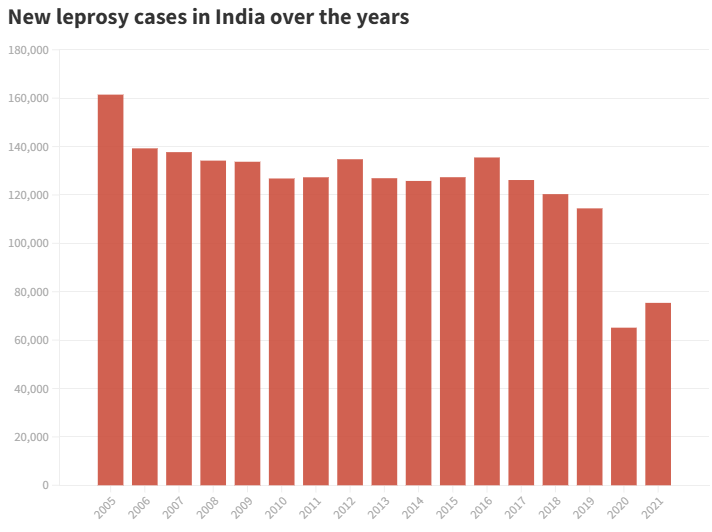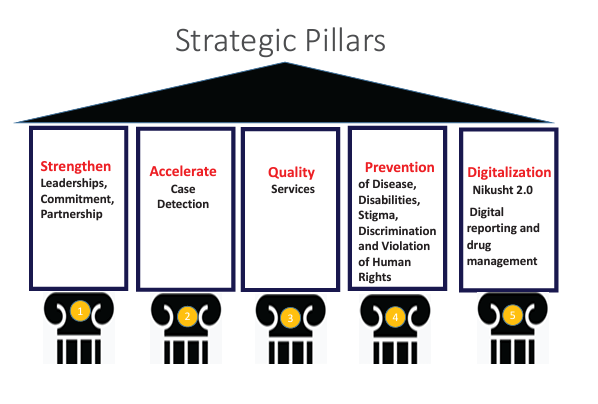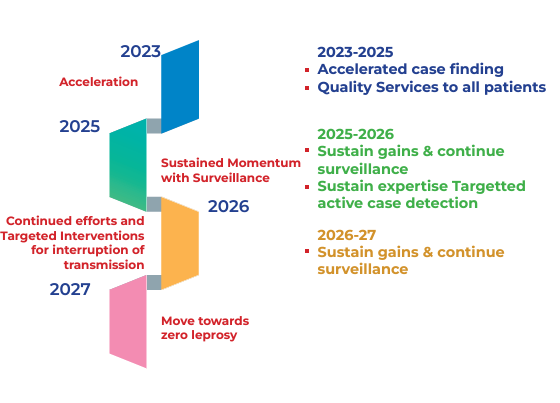7667766266
enquiry@shankarias.in
Recently , Supreme Court has set aside an NGT verdict directing the removal of a centre for leprosy patients running since 1960 in Pune.
Elimination means prevalence of less than 1 per 10 000 population.
In 2022-23, more than 1,00,000 people were detected with leprosy in the country.
ASHAs play a vital role in identifying cases during home visits and referring them for diagnosis.



Reference